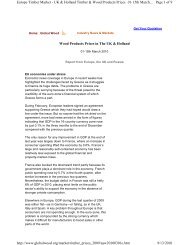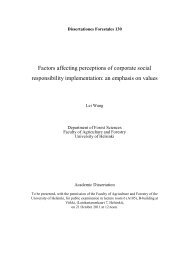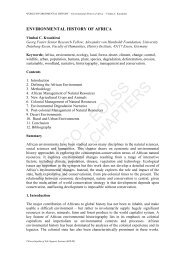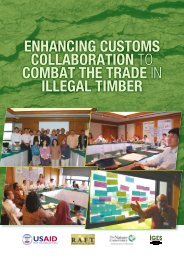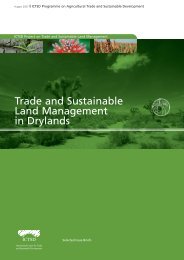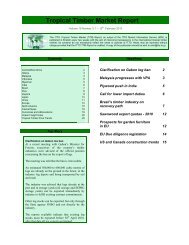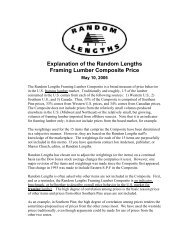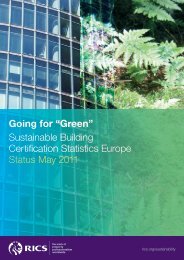ICT and e-Business in the Pulp, Paper and Paper ... - empirica
ICT and e-Business in the Pulp, Paper and Paper ... - empirica
ICT and e-Business in the Pulp, Paper and Paper ... - empirica
Create successful ePaper yourself
Turn your PDF publications into a flip-book with our unique Google optimized e-Paper software.
<strong>Pulp</strong>, paper <strong>and</strong> paper products<br />
Thus, EDI based st<strong>and</strong>ards will cont<strong>in</strong>ue to play an important role for e-bus<strong>in</strong>ess<br />
messag<strong>in</strong>g <strong>in</strong> manufactur<strong>in</strong>g <strong>in</strong>dustries <strong>in</strong> <strong>the</strong> near future.<br />
Exhibit 3-10: Companies plann<strong>in</strong>g to migrate from EDI to XML based st<strong>and</strong>ards<br />
0 20 40 60 80 100<br />
<strong>Pulp</strong> & <strong>Paper</strong> (EU-10)<br />
18<br />
82<br />
All 10 sectors (EU-10)<br />
3<br />
97<br />
Plan to migrate w ith<strong>in</strong> 12 months<br />
No migration plans<br />
Base (100%): Companies us<strong>in</strong>g EDI. N (for sector, EU-10) = 71.<br />
Weight<strong>in</strong>g: <strong>in</strong> % of firms. Questionnaire reference: G4<br />
Source: e-<strong>Bus<strong>in</strong>ess</strong> W@tch (Survey 2006)<br />
3.3.2 Interoperability challenges<br />
Interoperability refers to <strong>the</strong> "ability of two or more systems to exchange data, <strong>and</strong> to<br />
mutually use <strong>the</strong> <strong>in</strong>formation that has been exchanged." 45 e-<strong>Bus<strong>in</strong>ess</strong> W@tch asked<br />
companies whe<strong>the</strong>r <strong>the</strong>y regard <strong>in</strong>teroperability as critical for conduct<strong>in</strong>g e-bus<strong>in</strong>ess with<br />
companies from <strong>the</strong>ir own sector, from o<strong>the</strong>r sectors, <strong>and</strong> for produc<strong>in</strong>g <strong>the</strong>ir products or<br />
services. Results are fairly consistent with those obta<strong>in</strong>ed from a similar question <strong>in</strong> 2005<br />
<strong>and</strong> do not show any pronounced differences between sectors (see Exhibit 3-11), with <strong>the</strong><br />
possible exception of <strong>the</strong> telecommunications <strong>and</strong> construction <strong>in</strong>dustries.<br />
In <strong>the</strong> P&P <strong>in</strong>dustry, about 30% of all companies see <strong>in</strong>teroperability as critical <strong>in</strong> each<br />
of <strong>the</strong> three categories asked. This f<strong>in</strong>d<strong>in</strong>g must be put <strong>in</strong>to perspective, however, s<strong>in</strong>ce<br />
only about two thirds of all firms say that e-bus<strong>in</strong>ess constitutes a "significant part" or<br />
"some part" of <strong>the</strong> way <strong>the</strong>y operate. Thus, about 45% of those companies for whom e-<br />
bus<strong>in</strong>ess plays a role <strong>in</strong> <strong>the</strong>ir day-to-day rout<strong>in</strong>es are aware of <strong>the</strong> critical role of<br />
<strong>in</strong>teroperability. The perceived importance of <strong>in</strong>teroperability <strong>in</strong>creases slightly by<br />
company size.<br />
45<br />
Def<strong>in</strong>ition by IEEE <strong>and</strong> ISO, cf. e-<strong>Bus<strong>in</strong>ess</strong> W@tch Special Study on e-<strong>Bus<strong>in</strong>ess</strong> Interoperability<br />
<strong>and</strong> St<strong>and</strong>ards, September 2005, p. 14. Available at www.ebus<strong>in</strong>ess-watch.org ('resources').<br />
45



